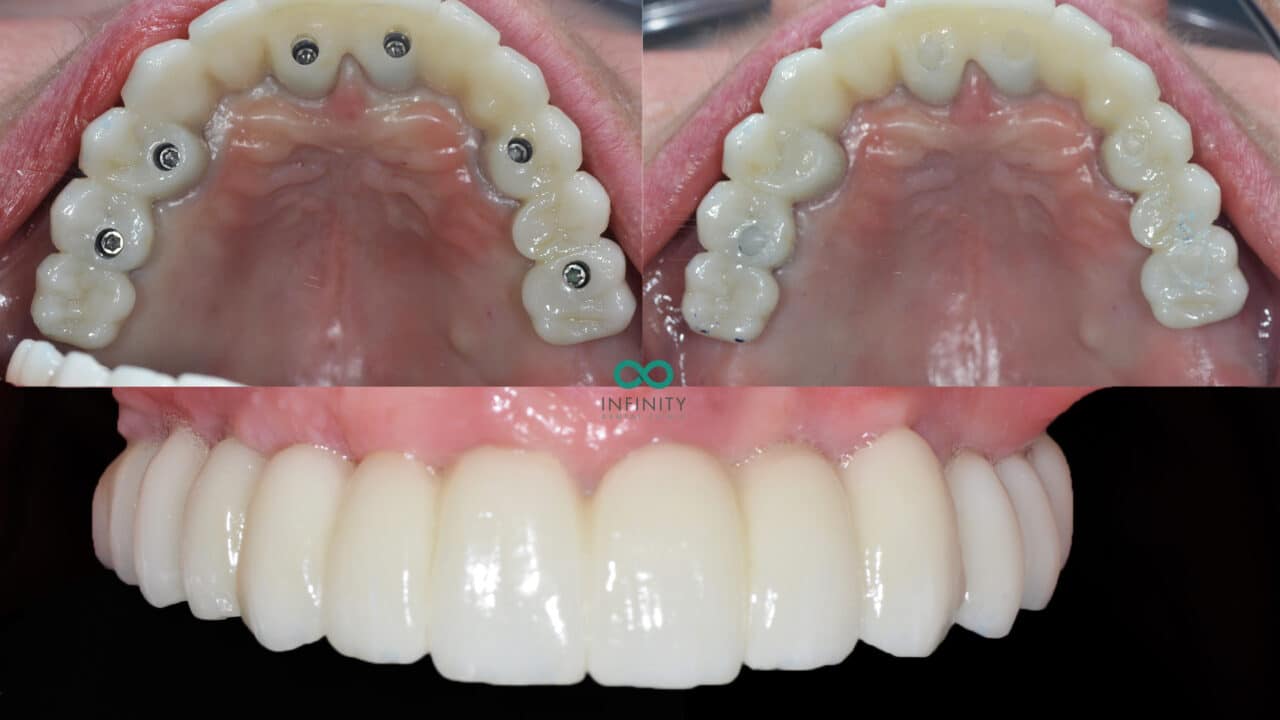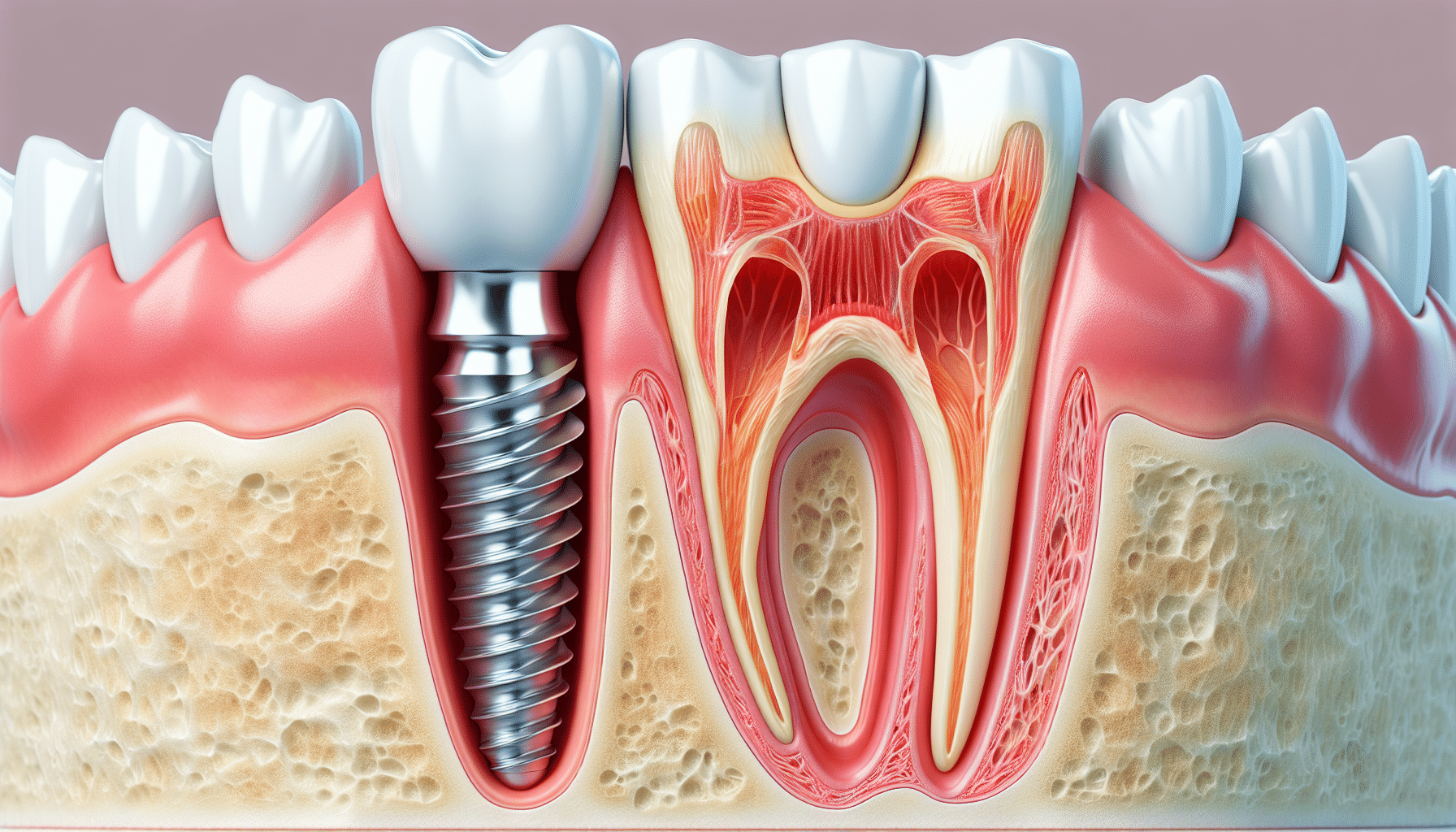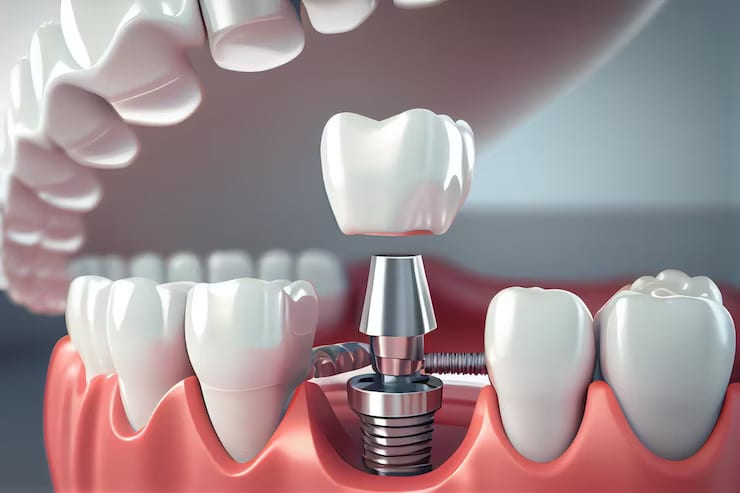Orthodontics Alexandria OH Dental Implant Procedures
Dental implants have revolutionized restorative dentistry, offering a dependable alternative to conventional methods for replacing missing teeth. The integration of dental implants with the jawbone is a posh organic course of known as osseointegration. Look At This This process not only anchors the implant securely but additionally helps keep Check This Out jawbone health, stopping straight from the source the bone loss usually related to missing teeth.
The dental implant itself is typically made of titanium, a biocompatible materials that the physique accepts. When an implant is placed in the jaw, it's designed to closely mimic the basis of a natural tooth, which is important for efficient integration. The titanium floor encourages the expansion of bone cells, enabling the jawbone to bond with the implant over time.
Mono Dental Implants Galena OH What Are Dental Implants? Types, Benefits, and More

Several phases represent the osseointegration course of. Initially, when the implant is surgically positioned into the jaw, a therapeutic period is required for the encompassing bone to begin out transforming. During this time, the bone grows across the implant, making a strong and steady basis. This therapeutic time can differ, sometimes lasting several weeks to a few months, relying on various factors, including the individual's general health and the precise location of the implant.
The position of surrounding bone quality is crucial. High-density bone typically supplies a greater surroundings for osseointegration compared to lower-density bone. Specialists usually consider the quality and amount of bone before the implant placement to find out the most effective plan of action, which may contain bone grafting procedures in instances of insufficient bone quantity. Grafting enhances the probabilities of successful integration by creating a more strong base for the implant.
The organic mechanisms behind osseointegration contain numerous cellular actions. Osteoblasts, the cells answerable for bone formation, migrate to the implanted area and begin to put down new bone material. Simultaneously, the floor of the titanium implant undergoes modifications that facilitate this bonding process. Some newer implant designs incorporate floor modifications to additional enhance organic integration.
Dentist Office Columbus OH Full Mouth Dental Implants: A Comprehensive Solution
Throughout the combination process, the role of blood supply cannot be overstated. An sufficient blood supply nourishes the bone and ensures the proper functioning of the cells involved within the therapeutic and integration course of. Improved blood move results in faster therapeutic and higher outcomes, which is why surgical strategies and aftercare typically prioritize sustaining or enhancing blood circulation to the positioning of the implant.
Improvements in surgical strategies additionally contribute considerably to the success charges of dental implants - Smile Care Hartford OH. Minimally invasive methods and guided implant surgery permit for more precise placement of implants, reducing trauma to the surrounding tissues and potentially speeding up the therapeutic time. The much less trauma skilled by the jawbone can result in a extra favorable environment for osseointegration
Dentists Johnstown OH The Benefits of Dental Implants: Why Choose Them?

How an individual maintains their oral hygiene after receiving an implant can significantly affect integration success. Proper care across the implant site helps prevent infections, which can disrupt the therapeutic process. Regular dental check-ups are also important to observe the health of each the implant and the surrounding gum and bone tissues.
Long-term success with dental implants is often linked to factors corresponding to way of life selections. Patients who smoke or have uncontrolled diabetes might experience decrease rates of osseointegration. These conditions interfere with therapeutic and blood supply, making it important for individuals considering implants to debate their health historical past with their dentist.
After the successful integration of the implant, the following part involves inserting the prosthetic restoration, such as a crown. The ultimate restoration must match comfortably and functionally integrate with the present dentition. Pediatric Dentist Sunbury OH. Proper alignment and occlusion play essential roles in how nicely the implant will perform over time
Johnstown Dental Johnstown OH The Advantages, Risks, and Insurance for Dental Implants
Dental implants present an enduring answer that helps protect the integrity of the jawbone. When a tooth is misplaced, the bone that once anchored its root begins to deteriorate. Implants stimulate the bone similarly to natural teeth, triggering the jaw to maintain up its density and energy. This stimulation is essential for stopping the sunken facial appearance that always accompanies tooth loss.
In conclusion, the integration of dental implants with the jawbone includes a fancy interaction of organic and mechanical components. Understanding the osseointegration process can empower individuals to make informed decisions about their dental health. By appreciating the importance of choosing a skilled dental professional and adhering to post-operative care, patients can achieve optimal outcomes and luxuriate in restored perform and aesthetics for many years to come back.

- Dental implants mimic the structure of natural teeth and supply a stable foundation by integrating with the jawbone via a process referred to as osseointegration.
- The biocompatibility of titanium, generally used for dental implants, performs an important role in promoting successful bonding with bone tissue.
- Osseointegration typically begins within a few weeks post-surgery, with the implant surface gradually becoming enveloped by bone cells.
- The mechanical stability of implants is enhanced by their surface roughness, which encourages bone growth and improves the integration course of.
- Immediate loading of implants may be possible in sure instances, depending on bone density and the patient’s general dental health.
- Over time, the jawbone responds to the presence of an implant by undergoing remodeling, contributing to the long-term success of the procedure.
- Factors corresponding to oral hygiene, smoking habits, and systemic medical conditions can considerably influence the mixing process of dental implants.
- Regular follow-ups and imaging techniques, corresponding to X-rays, may help monitor the success of osseointegration and detect potential problems early.
- The preservation of surrounding bone structure is enhanced by the stimulation offered by dental implants, which can help prevent bone loss in adjacent areas.
- Successful integration not only restores functionality to the tooth but also contributes considerably to the aesthetics of the affected person's smile and facial structure.undefinedWhat are dental implants and how do they work with the jawbone?undefinedDental implants are titanium posts surgically inserted into the jawbone to serve as synthetic tooth roots. Once positioned, they undergo a process known as osseointegration, where the jawbone naturally fuses with the implant, creating a steady basis for the replacement tooth.
How does osseointegration occur?undefinedOsseointegration is a biological course of where bone cells grow and connect to the surface of the dental implant. This typically takes a quantity of months, throughout which the implant becomes firmly anchored within the jawbone, making certain strength and stability for the bogus tooth.
Orthodontics Galena OH Understanding Dental Implants: A Comprehensive Guide
What elements affect the success of dental implant integration?undefinedKey elements embrace the standard and amount of the jawbone, the patient's general health, and oral hygiene practices. Adequate bone density is essential, as inadequate bone could impede profitable integration.
Is the pain during dental implant placement significant?undefinedMost patients report minimal discomfort through the process, as native anesthesia is used. Post-operative pain is mostly manageable with over-the-counter pain reduction medications, and most discomfort subsides within a number of days.
How long does the mixing course of take?undefinedTypically, osseointegration takes about three to 6 months. However, this could range primarily based on individual healing processes and the specific conditions of the jawbone.
Can anyone get dental implants?undefinedMost individuals are candidates for dental implants; however, certain conditions such as uncontrolled diabetes or severe gum disease may affect eligibility. A thorough evaluation by a dental professional is important to determine suitability.
Dentists Granville OH Dental Implant Recovery
What may be done if there is not enough jawbone for integration?undefinedIf there's inadequate bone, procedures like bone grafting can be carried out to augment the jawbone. Once the graft heals, dental implants can then be positioned, allowing for profitable integration.
Are there long-term care considerations after getting dental implants?undefinedYes, sustaining excellent oral hygiene is important for the longevity of dental implants. Regular dental check-ups and cleanings also assist prevent complications and make sure the ongoing health of the encompassing bone and gum tissue.
Dentist Office Centerburg OH Dental Implant Benefits
How do dental implants compare to other tooth replacement options?undefinedDental implants are often considered superior to dentures and bridges as a end result of their durability, stability, and the preservation of jawbone health. Unlike other options, implants fuse with the jawbone, which helps maintain bone density and facial structure.